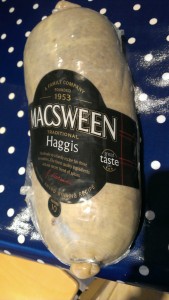As mentioned in an earlier post, natto was my biggest “taste hump” in recent years, my most significant challenge since being urged to “come on – just try” the sheep’s brains my mum had scrambled with some eggs for lunch for me one afternoon when I was a teenager. I’m aware that the idea of eating brains is abhorrent to many, but I’m interested in the importance of cultural and historical context in taste preferences, so bear with me.
My mum grew up as a post-war child in 1950s Australia where scrambled brains represented a cheap nutritious meal. While not so popular there now, or the UK, in large part due to its links with BSE, it is still the norm in other cultures (Cuba, the Middle East, Pakistan, Bangladesh, China and France to name a few).
My brain eating experience took place in the mid ’80s. The Cold War was a constant background hum in our lives, women were chaining themselves to the fence at Greenham Common, the chilling TV drama Threads was being aired, along with disturbing documentaries such as On the 8th Day.
A basic rule in our house when I was growing up had been – “You eat what’s on your plate”. I’d managed to negotiate two opt-out tickets (Brussels Sprouts and liver) on the basis of “being an individual with different tastes” and, I suppose, a lot of tears and whining. However, now that I was a teenager my fussiness, as they saw it, seemed relevant to what was going on in the world. “What if there was a nuclear war and this kind of food was all we had to eat?” they reasoned. Part of me (undoubtedly the part that had been psychologically assaulted by aforementioned TV programmes) knew they were right….(just watch the movie if you don’t believe me).
But also, it was still quite easy to buy tongue, tripe, sweetbreads (thymus and pancreas), oxtail and bones in the supermarket in those days, so it wasn’t a massive leap from there to buying a bag of brains from the butcher (I suppose).
The cultural implications of offal availability in large supermarket chains wasn’t what was on my mind, however, as I stared at the plate in front of me. Every minute that ticked by saw the food transmogrify from a small plate of potentially edible hot scrambled eggs – with a smattering of brains – into a gargantuan platter of brains that were cooling (to brain temperature) and congealing (to brain texture). The scrambled egg component (now also cold), by contrast, becoming diminishingly imperceptible.
I mustered all my courage and lifted the fork to my mouth, but the undeniable smell of something-I-didn’t-recognise-but-understood-to-be-brain, made me retch. Nope. No can do. “I’ll make a deal. If there is a nuclear war I’ll eat brains” I promised, adding “if I really have to,” to ensure an escape route hadn’t been entirely ruled out.
Thankfully they didn’t push the issue and I got away with “just trying” a tiny mouthful. To this day I can still remember that taste and texture. This was no hump, this was my Mount Everest. Lucy Martin’s description of her experiences eating brain on her Homesick and Heatstruck blog struck a chord with me.”The texture was unnervingly creamy and soft” she says, adding “it was silky. Eerily silky. Like a limp, moist handshake. Or a shaved cat. Or the soft voice of a psychopath”.
I’m not saying this experience was directly related to my support for CND, or necessarily led to my increased interest in Gorbachev’s rise to power. But it seems to tally with Højlund’s opinion (Højlund, 2015) that cultural taste sharing “is related to the situational as well as to the geographical, political and historical context.”

